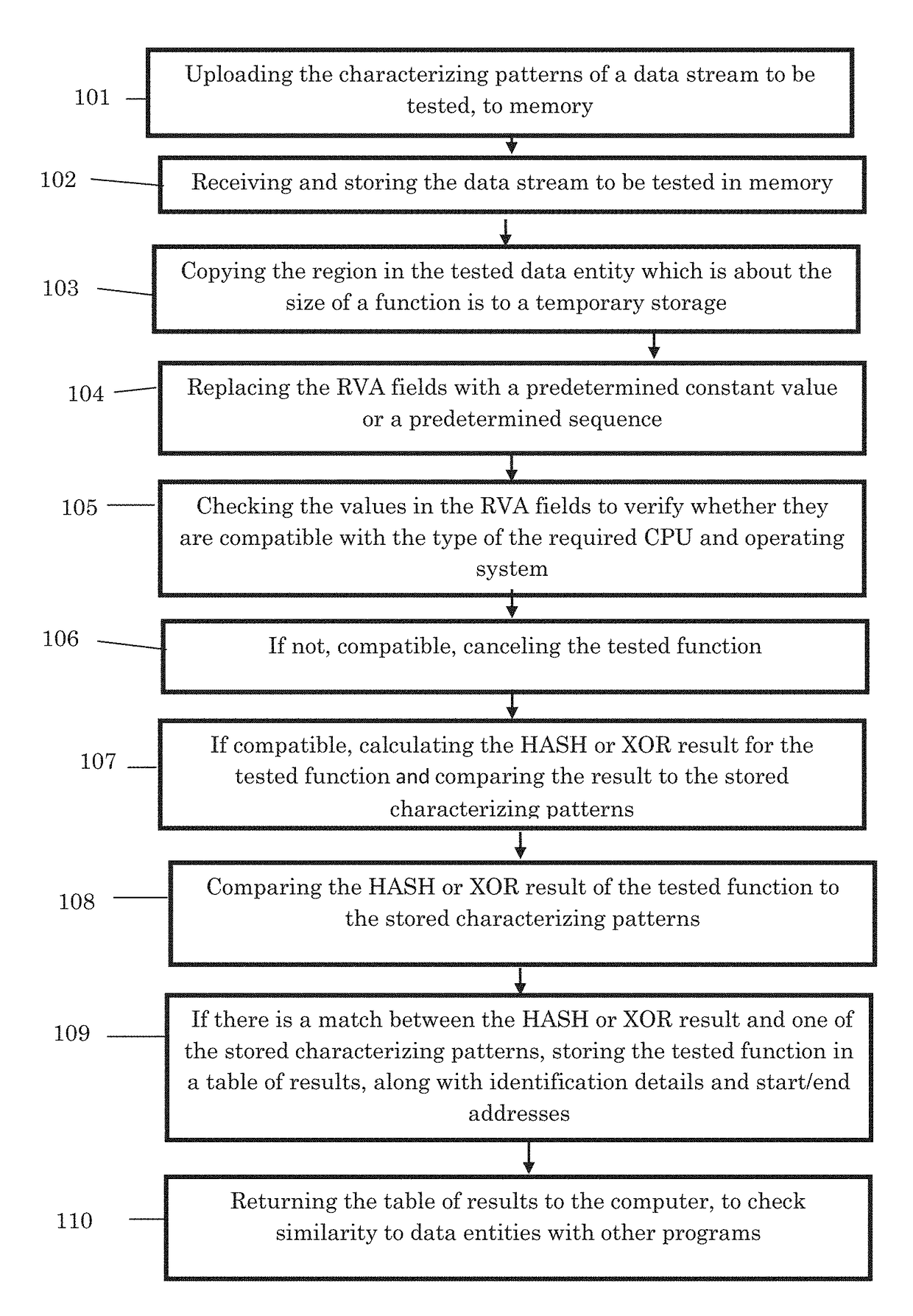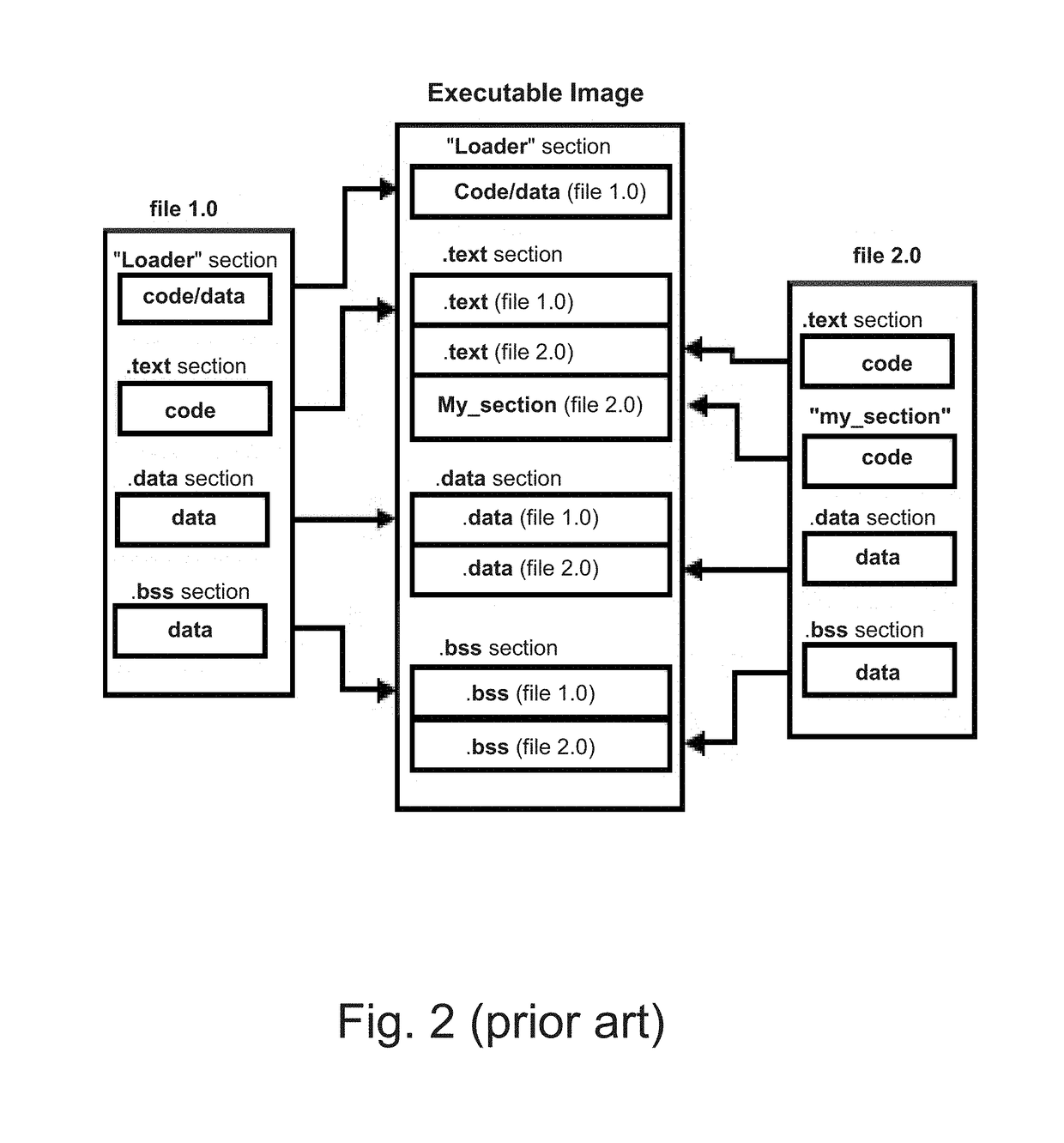Method to identify known compilers functions, libraries and objects inside files and data items containing an executable code
a compiler and function technology, applied in the field of data security, can solve the problems of affecting a large number of malicious software (also known as malware), serious risks to millions of computer users, and being vulnerable to data loss, identity theft, and productivity loss
- Summary
- Abstract
- Description
- Claims
- Application Information
AI Technical Summary
Benefits of technology
Problems solved by technology
Method used
Image
Examples
Embodiment Construction
[0075]The present invention suggests a method for identifying the functionality and structure of executable files or codes, which does not require full reverse engineering or the execution of suspected executable files or codes, in order to determine whether or not they are malicious. This is done by identifying known compilers' functions objects and libraries including those from known sources or from a small identified code such as Zero day malicious vulnerability etc., as will be explained below.
[0076]Programmers use high level compilers (a special program that processes statements written in a particular programming language and turns them into machine language or “code” that a computer's processor uses) as a part of their development environment. These compilers use internal libraries and objects that are linked to the user functionality to create the program. The programmer can link additional known libraries or objects from other sources, such as Zero-Day rootkits (an attack ...
PUM
 Login to View More
Login to View More Abstract
Description
Claims
Application Information
 Login to View More
Login to View More - R&D
- Intellectual Property
- Life Sciences
- Materials
- Tech Scout
- Unparalleled Data Quality
- Higher Quality Content
- 60% Fewer Hallucinations
Browse by: Latest US Patents, China's latest patents, Technical Efficacy Thesaurus, Application Domain, Technology Topic, Popular Technical Reports.
© 2025 PatSnap. All rights reserved.Legal|Privacy policy|Modern Slavery Act Transparency Statement|Sitemap|About US| Contact US: help@patsnap.com



